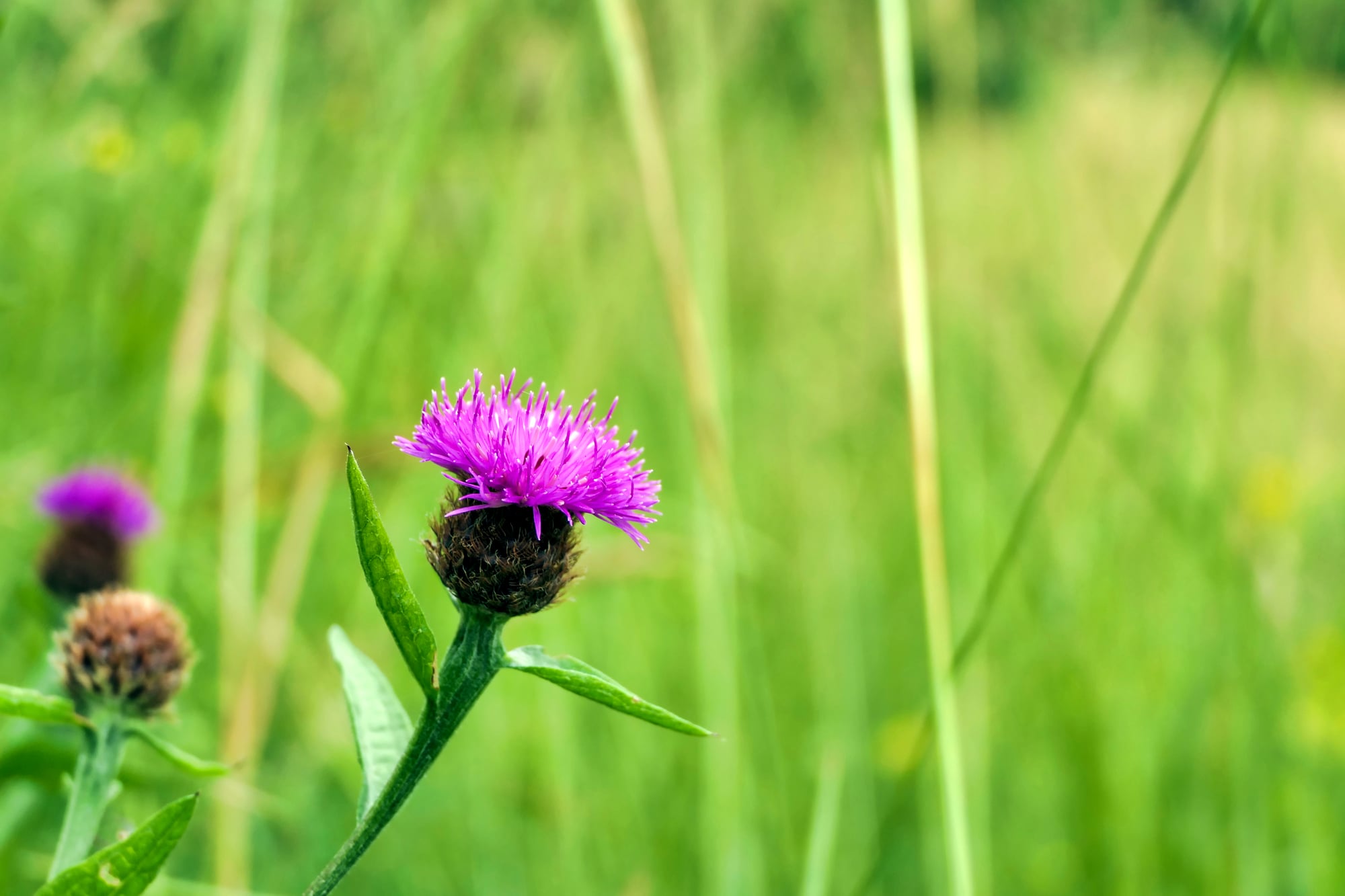The common knapweed (centaurea nigra), also known by many other common names (lesser knapweed, black knapweed, and brown knapweed) is a flowering plant that is a member of the daisy family. It is native to Europe and North Africa, but has become invasive in some other parts of the world.
What Does Knapweed Look Like?
The wild flower is a perennial plant with showy deep purple flower heads on tall plant stems. It is easy to recognise due to its distinctive knobby appearance. The flower heads are round to ovoid and are between 1-8 cm (0.5-3 in) in diameter. The flowerhead has florets in various shades of purple, lilac and white.

Where Can I See It?
It is native to the Mediterranean region and Western Europe, especially western France and Great Britain. It has been introduced to North America and Canada (mainly Alberta), Australia (where it is invasive), India, Israel (where it is considered an invasive species) and New Zealand. It has also been reported from countries not previously listed such as China but these reports require investigation.
In the UK, knapweed is most widespread in the south and central regions although it can be found in all areas. It grows in colonies on infertile soil, disturbed ground such as roadside verges, on cultivated ground, along cliff tops, and alongside railway tracks. It will grow in clumps and, like many other weeds, e.g. hawkweed, it will also be found on waste ground.
When To See It
The flowering period of common knapweed is between July to September
Is Knapweed Any Good?
Not necessarily for humans, but for insects, yes. Centaurea nigra (common knapweed) produces copious amounts of nectar throughout the flowering season, and in fact, was rated among the top five for most nectar production in a UK plants survey. It attracts many pollinating insects such as butterflies, and is especially favourite among meadow browns, marbled whites, and common blues. It provides a great source of food for these insects. During this time, bees can often be seen collecting pollen from their flowers.

Is Knapweed Poisonous?
Common knapweed contains a substance known as pyrrolizidine alkaloids, which degrades under heat or dry conditions to produce toxic products. These alkaloids can cause liver damage and is thought to cause some types of cancer. When handling knapweed, be sure to wear gloves.

Is Knapweed An Invasive Plant?
Though some may find this plant to be beautiful, it can cause some issues for farmers and gardeners. The plant is widely considered a troublesome weed in arable farming, especially in grassland farming where it grows mixed with cereals and reduces yield. Where established it is difficult to remove from cultivated land without herbicides.
The common knapweed has a deep taproot that can invade crop soil while its wiry stem can take over gardens by choking out other plants. It grows rapidly and has also been shown to increase the weediness of adjacent plants.
For these reasons, common knapweed needs to be controlled on farms and in gardens before it causes major problems.
Additional Resources
Sources and References
- Knapweed (common) – plantlife.org.uk
- Centaurea Nigra – (Common Knapweed) – first-nature.com
Sam loves to learn about animals and their habitats. He has been a nature lover from a very young age, and has been writing papers and articles about wildlife for as long as he can remember.
